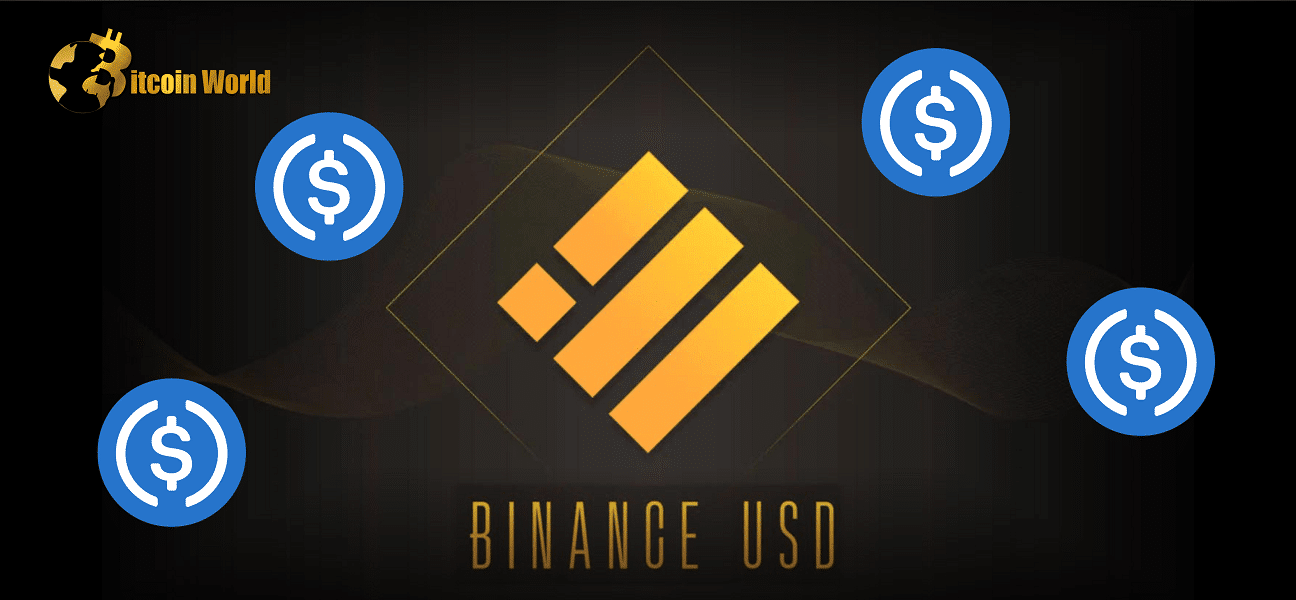Stablecoins, designed to be the bedrock of the crypto world, are facing turbulent times. And one of the major players, USDC, is feeling the heat. Circle, the company behind the U.S. dollar-pegged stablecoin USDC, has recently revealed some interesting insights into the challenges their stablecoin is encountering. Buckle up as we dive into why USDC’s growth might be slowing down and what it means for the broader stablecoin market.
What’s Happening with USDC?
In a recent filing with the U.S. Securities and Exchange Commission (SEC), Circle painted a picture of increased competition in the stablecoin arena. They explicitly stated that this heightened competition is likely to put pressure on USDC, potentially hindering its growth trajectory and impacting the company’s financial health.
But what’s fueling this increased competition and pressure? Let’s break it down.
The Binance BUSD Conversion: A Major Headwind
One of the most significant factors Circle highlighted was Binance’s decision to automatically convert USDC holdings in user wallets into BUSD, Binance’s own stablecoin. This move, implemented by the world’s largest cryptocurrency exchange, has had a direct and considerable impact on USDC circulation.
According to Circle’s estimates, this automatic conversion is responsible for a substantial portion of the decrease in USDC circulation. Let’s look at the numbers:
- Between June 30th and September 30th, USDC in circulation dropped by a significant US$8.3 billion.
- Circle estimates that Binance’s automatic conversion contributed to as much as US$3 billion of this decline.
That’s a considerable chunk! Essentially, when Binance, a dominant force in the crypto exchange world, nudges its users towards BUSD, it naturally draws liquidity and market share away from competing stablecoins like USDC.
Beyond Binance: Other Factors Contributing to USDC’s Decline
While the Binance BUSD conversion is a major factor, Circle also pointed to a confluence of other market-wide events that have contributed to the reduction in USDC circulation. These include:
- Lower Cryptocurrency Prices: The overall downturn in the cryptocurrency market throughout 2022 has undoubtedly impacted stablecoin demand. When crypto prices fall, there might be less need for stablecoins for trading or hedging.
- Failures of Major Crypto Companies: The collapse of significant crypto entities like FTX, Voyager Digital, and Celsius has shaken investor confidence and triggered broader market uncertainty. This contagion effect can lead to reduced activity across the board, including in stablecoin markets.
- Higher Interest Rates: The rising interest rate environment in traditional finance is also playing a role. Stablecoins, which often offer yields through various DeFi protocols, now face competition from traditional investment avenues like U.S. Treasuries and money market funds, which are becoming increasingly attractive due to higher interest rates. Investors might be choosing to move funds from stablecoins to these more conventional, and now higher-yielding, options.
Stablecoin Market Dynamics: A Quick Look at the Top Players
To understand the competitive landscape, it’s important to know where USDC stands in the stablecoin hierarchy. Here’s a quick snapshot of the major players:
| Stablecoin | Issuer | Market Cap (approx.) | Notes |
|---|---|---|---|
| USDT (Tether) | Tether Limited | Largest stablecoin by market cap | |
| USDC | Circle | Second-largest stablecoin | Focus of this article |
| BUSD | Binance | Third-largest stablecoin | Gaining market share, backed by Binance |
*Market capitalization figures are approximate and fluctuate.
As you can see, the stablecoin market is dominated by a few key players. Binance’s strategic push for BUSD directly challenges the positions of USDC and other stablecoins.
The FTX Collapse and Market Contagion: An Added Layer of Risk
Circle’s filing also highlighted the recent FTX collapse and its potential for market contagion as another risk factor. The sudden and dramatic downfall of FTX, once a leading exchange, underscored the inherent risks within the crypto ecosystem and the potential for rapid and widespread impact across the market. Such events can further dampen market sentiment and indirectly affect stablecoin circulation and usage.
What Does This Mean for Circle and the Future of USDC?
Circle’s statement in their SEC filing is a clear indication that they are aware of the headwinds and potential challenges facing USDC. Their concluding remark is quite telling:
“If Circle stablecoins do not grow as we expect, our business, operating results, and financial condition could be adversely affected,”
This highlights the importance of USDC’s growth to Circle’s overall business strategy and financial health. The increased competition, particularly from exchange-backed stablecoins like BUSD, coupled with broader market uncertainties, presents a complex environment for USDC to navigate.
Looking Ahead: Navigating the Competitive Stablecoin Landscape
The stablecoin market is dynamic and constantly evolving. Circle, with USDC, faces the challenge of maintaining and growing its market share in an increasingly competitive landscape. To thrive, they might need to consider strategies such as:
- Innovation and Differentiation: Exploring new use cases for USDC, enhancing its utility, or offering unique features to stand out from the competition.
- Strategic Partnerships: Collaborating with other players in the crypto ecosystem to expand USDC’s reach and adoption.
- Adapting to Market Shifts: Being agile and responsive to changes in market conditions and investor preferences.
In Conclusion: Stablecoin Competition Heats Up
The stablecoin market is far from static. Circle’s recent filing provides a valuable glimpse into the real-world pressures faced by even established stablecoins like USDC. Binance’s strategic move with BUSD conversion, combined with broader crypto market headwinds, is creating a challenging environment. While USDC remains a major stablecoin, its future growth will depend on how effectively Circle can navigate these competitive pressures and adapt to the evolving dynamics of the crypto space. The stablecoin race is on, and the players are constantly jockeying for position.
Disclaimer: The information provided is not trading advice, Bitcoinworld.co.in holds no liability for any investments made based on the information provided on this page. We strongly recommend independent research and/or consultation with a qualified professional before making any investment decisions.


